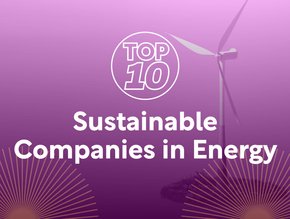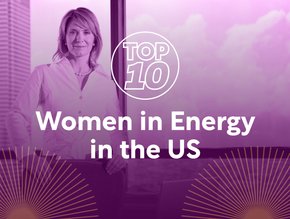
A new report from the IEA, Nuclear Power and Secure Energy Transitions: From Today’s Challenges to Tomorrow’s Clean Energy Systems, looks at how nuclear energy could help address two major crises – energy and climate – facing the world today.
For countries where nuclear power is considered an acceptable part of the future energy mix, the new report identifies the potential policy, regulatory and market changes that could be implemented in order to create new investment opportunities. Here are 10 key recommendations and opportunities.
10: New nuclear reactor construction costs need to fall sharply
The cost of building new nuclear reactors will be crucial to the future role of nuclear power in the global clean energy transition. At the cost assumptions in the NZE, nuclear plays a complementary role, contributing to system stability, expanding the suite of low emissions sources and stepping up where renewables are constrained.
However, in order to compete directly with solar PV and wind power, considering both the costs and system value for each technology, the construction cost of new nuclear would need to be reduced to $2000/kW or less for capacity to be added in 2030.
09: Nuclear is better able to compete with other dispatchable low emissions options
The cost of building new nuclear power plants needs to fall much less to compete with other dispatchable sources of low emissions electricity. In most places, nuclear construction costs would need to fall to $2000/kW to $3000/kW to compete with other dispatchable sources, including hydropower, bioenergy and fossil fuel plants equipped with CCUS, though the potential of these alternative dispatchable sources may be limited in some regions. Depending on financing costs, this would yield a LCOE of nuclear power of $40/MWh to $80/MWh.
08: Nuclear has important net zero security attributes
While variable renewables, mainly wind and solar PV, become the most cost-effective source of energy on an LCOE basis in many locations and, thus, generate most electricity in fully decarbonised systems in the NZE, other generating sources – including nuclear in some countries – are required for the secure operation of the system.
07: Carbon pricing puts value on low emissions benefits
Nuclear power is always behind both wind and solar PV in the merit order in wholesale markets, even with carbon pricing, as the latter has zero marginal costs.
However, the introduction of carbon pricing or an increase in the CO2 price has the effect of pushing up the cost of fossil-based generators, which raises the wholesale electricity price and increases the revenues received by nuclear plants without changing their costs.
06: Nuclear and low emissions hydrogen
Consideration is being given to the idea of devoting all or most of the output of a nuclear power plant to the electrolytic production of hydrogen as an alternative to renewables-based production.
The key advantage of nuclear power plants is that they are dispatchable and able to operate at very high annual capacity factors, enabling a high utilisation of the electrolyser and the production of steady and adjustable streams of low-carbon hydrogen.
This means that less hydrogen storage is required to smooth out daily, monthly and seasonal fluctuations in the supply of hydrogen. A stable, reliable flow of hydrogen is important to industrial users in particular for making optimal use of their production facilities.
05: Hydrogen production could exploit surplus nuclear power
Using electrolysis to take advantage of curtailed nuclear generation and low wholesale prices during periods of low electricity demand could be a more viable option.
This could raise the capacity factors of these plants and provide an additional revenue stream to their operators.
In the NZE, the fast-growing shares of variable solar PV and wind in the global electricity mix, as well as the progressive electrification of energy end uses such as heating and road transport, erodes the capacity factors of baseload power generating plants, including nuclear plants, as renewables increasingly drive nuclear power down the merit order. They also increase the need for system flexibility.
04: SMRs' technical and financial benefits
SMRs have important attributes that could equip them well for a role in energy transitions.
Lower power output and smaller reactor cores should increase the effectiveness of passive safety systems. Many SMRs include inherent safety features that all but eliminate the possibility of serious accidents. A greater reliance on passive cooling systems also enables simpler reactor designs, which should lower costs.
The benefits of passive safety systems may also lead to smaller offsite emergency planning zones, which would make it easier to site plants close to population or industrial centres.
03: Market leadership shifting from advanced economies
Almost 70% of the global reactor fleet is in advanced economies, but this fleet is ageing. There are big differences in the average age of nuclear capacity across regions, ranging from just 5 years in the People’s Republic of China to 15 years in India, 36 years in North America and 38 years in Europe. Market leadership has been shifting to the Russian Federation and China: 27 of the 31 reactors that began construction since 2017 are of Russian or Chinese design.
02: Net zero pledges revive nuclear interest
The number of countries with net zero targets has increased rapidly over the last few years. More than 70 countries, covering 76% of global energy-related CO2 emissions, have now adopted such a pledge, covering either CO2 or greenhouse gas emissions more broadly.
This compares with only six countries at the end of 2018. In addition, more than 60 other countries have pledged to reach net zero or carbon neutrality, but without specifying a timeframe.
These pledges are not yet underpinned by all the specific policies and measures that will be required for their realisation, but they are prompting deliberations on the mix of low emissions technologies, including energy efficiency, that can move countries towards these goals. Nuclear energy has been one of the beneficiaries.
01: Energy security focus provides new nuclear openings
Deployment of nuclear energy increases the diversity of the energy mix, can facilitate the rise of variable renewables such as wind and solar, and also provides an opportunity – at scale – to reduce reliance on fossil fuels.
The oil security crisis of the 1970s spurred the first wave of nuclear new-builds: in the decade that followed the first oil shock, construction started on almost 170 GW of nuclear power plants; these plants still represent 40% of the nuclear capacity that is operating today.
If policy support is forthcoming and costs are kept under control, the renewed interest in nuclear today could point in a similar direction. Russia’s invasion of Ukraine has exacerbated the tightness that was already apparent in fuel markets around the world.
This has in turn driven up electricity prices. According to the European Union Agency for the Cooperation of Energy Regulators (ACER), retail electricity prices were on average 30% higher year-on-year in February 2022, with prices increasing the most in places that depend heavily on natural gas in power generation, like Madrid, where they have risen 55%, and Rome (80%).
Europe’s push to diversify away from Russian supply could maintain upward pressure on fuel prices for some time to come. Nuclear energy is one of the options that can be deployed by governments to reduce reliance on fossil fuels for the power sector, in particular for natural gas.






